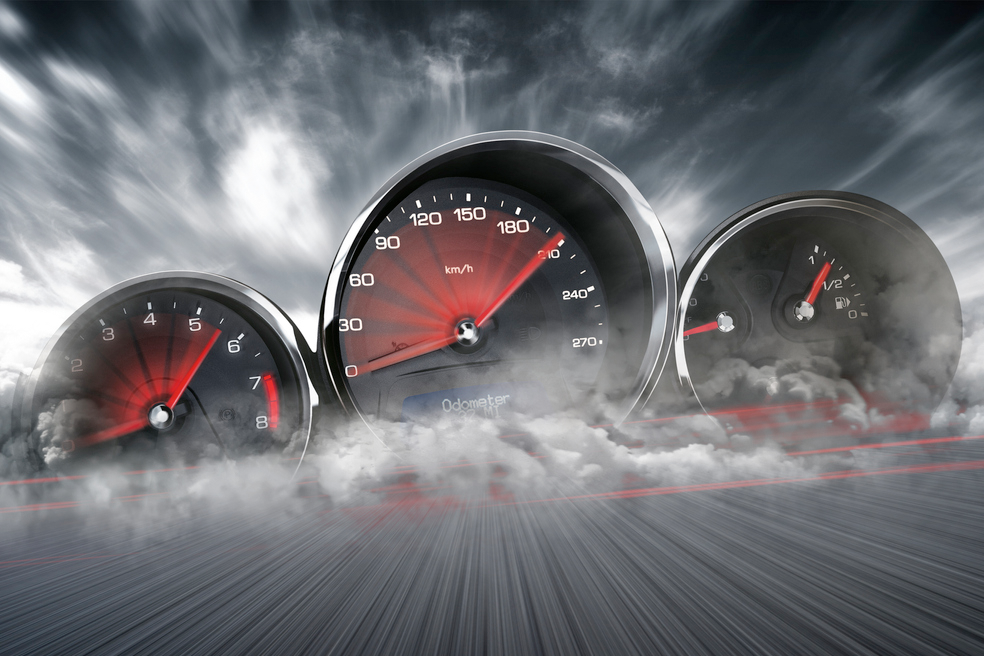A Stunt Driving Ticket is One of the Most Serious Ontario Highway Traffic Act Charges.
Due to the seriousness of the offence, on July 1st, 2021 the penalty for stunt driving increased and poses an even greater threat to motorists in Ontario. A conviction always carried a costly monetary fine on top of the administrative consequences and demerit points, but recent amendments now provide for mandatory, long-term licence suspensions for convicted drivers. Post-conviction insurance consequences have never been higher.
What is Stunt Driving?
Section 172(1) of the Ontario Highway Traffic Act defines Stunt Driving and indicates that “No person shall drive a motor vehicle on a highway in a race or contest, while performing a stunt or on a bet or wager.” 2007, c. 13, s. 21.
Recent amendments that came into full force and effect on July 1, 2021 redefined the excessive speed thresholds for the offence of stunt driving/racing. If the speed limit is 80 kilometers per hour or faster, stunt driving is defined as driving 50 kilometers per hour or more above the posted limit. However, if the posted speed limit is less than 80 kilometers per hour, excessive speed is defined as being 40 kilometers per hour or more. It is now more important than ever to pay close attention to posted speed limit signs.

While excessive speed stunt driving tickets are some of the most common charges, further definitions for how charges can be laid can be found here.
What is the Penalty for Stunt Driving in Ontario?
Immediate roadside administrative penalties are as follows:
- 30-day Ontario Driver’s Licence suspension, surrendered to charging officer(s); and
- 14-day mandatory motor vehicle impoundment.
Court-imposed penalties are as follows:
- a monetary fine between $2,000 and $10,000, plus victim fine surcharge and court costs;
- a mandatory Ontario Driver’s Licence suspension:
- first-offence: one (1) to three (3) years,
- second-offence: three (3) to ten (10) years,
- third/subsequent: indefinite, and/or
- a custodial jail sentence not exceeding 6 months.
Post-conviction administrative penalties imposed by the Ministry of Transportation (MTO) are as follows:
- six (6) demerit points will be applied to the Ontario Driver’s Licence; or
- the Ontario Driver’s Licence may be suspended for the accumulation of too many demerit points.
It is important to note that while a conviction for stunt driving may result in a jail sentence, a conviction does not result in a criminal record.
Stunt Driving Defences
Stunt Driving is classified as a “strict liability” offence which means it is defensible by way of the following prospective defences:
- Due Diligence – Whether the defendant can prove on a balance of probabilities that reasonable care and attention was taken to prevent the commissioning of the offence, or in the case of novice drivers, whether they have the necessary experience to act the way a reasonable, prudent driver would behave an a particular situation on the highway.
- Prove It –The onus (requirement) is on the Crown Prosecutor to prove all elements of a stunt driving case beyond a reasonable doubt. The Crown must prove:
- that the offence happened on a highway while the defendant was in operation of a motor vehicle;
- that technical issues such as date, time, jurisdiction, and identity are appropriate according to the charging officer;
- the charging officer had reasonable suspicion to conclude that a vehicle was travelling at an excessive rate of speed, and
- that a qualified radar or laser operator tested the speed monitoring device pursuant to the manufacturers specifications and deemed the recording to be accurate.
- Necessity – The defendant must prove a reasonable belief of imminent peril or danger and that there was no other legal alternative other than the course of action taken by the defendant. An issue with arguing the defence of necessity for a stunt driving ticket, especially if it is for excessive speed, is that the defendant must first admit that the behaviour leading the offence existed but that there was no other reasonable alternative due to their reasonable fear. If the presiding Justice of Peace disbelieves the necessity argument, the defendant would have already admitted to the conduct that resulted in the ticket in the first place.
How Can I Be Charged with Stunt Driving?
As indicated above, O-Reg 445/07 clearly establishes a number of different driving behaviours that may result in a ticket for stunt driving:
- excessive speeds of 50, or more, kilometres per hour above the posted speed limit;
- driving behaviour that suggests or indicates that two or more vehicles are engaged in a contest;
- chasing another motor vehicle;
- repeatedly changing lanes in close proximity to other vehicles;
- intention to lift a tire, or tires, off of the ground (for example, motorcycles and “wheelies”);
- intention to cause tire(s) to lose traction while turning (for example, drifting);
- intentional spinning or burn-outs (for example, doing “doughnuts”);
- driving two or more vehicles side by side while one vehicle is driving in the oncoming lane;
- driving with a passenger in the trunk;
- driving a motor vehicle while a driver is not occupying the driver’s seat;
- intention to prevent another vehicle from lawfully executing a “pass”;
- brake-checking or intentionally stopping/slowing down; or
- tail-gating.
